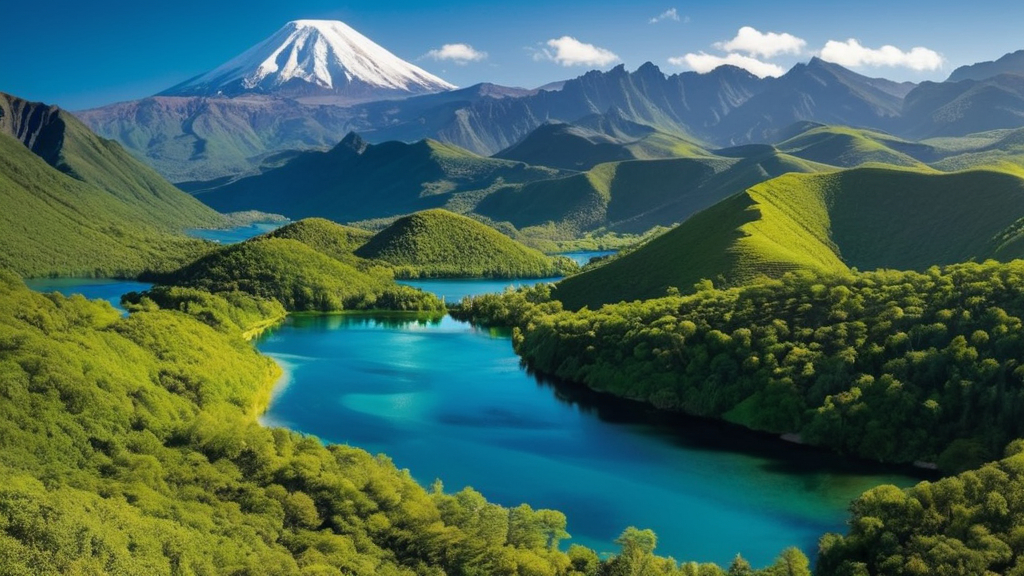Introduction
As the global focus on sustainability intensifies, eco-friendly travel destinations are becoming increasingly popular among conscientious travelers. These destinations not only offer breathtaking natural beauty but also demonstrate a strong commitment to environmental conservation and sustainable practices. For 2024, several destinations stand out for their efforts in promoting eco-tourism and protecting the environment. This guide highlights the top eco-friendly destinations where you can explore responsibly while minimizing your carbon footprint.
1. Costa Rica
Costa Rica has long been a beacon of eco-tourism, blending its rich biodiversity with innovative conservation practices. The country’s diverse ecosystems, from lush rainforests to pristine beaches, offer numerous sustainable travel experiences.
Sustainable Lodging
- Certified Accommodations: Many eco-lodges and hotels in Costa Rica are certified under the Certification for Sustainable Tourism (CST) program. These establishments adhere to rigorous environmental standards, including waste management, water conservation, and energy efficiency.
- Notable Stays: Examples include the Lapa Rios Lodge and the Monteverde Inn, both of which are recognized for their commitment to sustainability and conservation.
Eco-Tourism Activities
- National Parks: Explore Costa Rica’s national parks such as Tortuguero and Manuel Antonio, which offer guided tours that emphasize environmental education and wildlife protection.
- Wildlife Sanctuaries: Visit the Jaguar Rescue Center or the Selva Verde Biological Station to learn about local wildlife and conservation efforts.
2. New Zealand
Renowned for its stunning landscapes and environmental stewardship, New Zealand is a leader in sustainable tourism. The country’s commitment to conservation is evident in its extensive protected areas and innovative green practices.
Conservation Efforts
- Protected Areas: New Zealand’s Department of Conservation manages over 8 million hectares of land, ensuring the protection of its unique flora and fauna. Key areas include Fiordland National Park and the Tongariro National Park.
- Native Species Protection: Initiatives to protect endangered species such as the kiwi and the tuatara are a priority.
Green Transportation
- Cycling Trails: Utilize New Zealand’s extensive network of cycling trails like the Otago Central Rail Trail, which offers a sustainable way to explore the countryside.
- Public Transport: Efficient public transportation options, including buses and trains, help reduce the carbon footprint of traveling around the country.
3. Slovenia
Slovenia, celebrated for its green initiatives and natural beauty, is one of the most eco-friendly countries in the world. From its alpine landscapes to its charming capital, Ljubljana, the country excels in sustainable tourism.
Green Destinations
- Ljubljana: Awarded the European Green Capital in 2016, Ljubljana is known for its green spaces, pedestrian-friendly streets, and extensive recycling programs.
- Bled and Bohinj: These picturesque areas offer eco-friendly activities such as hiking and kayaking, along with accommodations that follow sustainable practices.
Eco-Friendly Activities
- Cycling and Hiking: Explore the Julian Alps and Triglav National Park through eco-friendly activities like cycling and hiking.
- Eco-Spas: Enjoy wellness experiences at eco-friendly spas that use natural and locally sourced products.
4. Iceland
Iceland’s dramatic landscapes and commitment to renewable energy make it a prime destination for eco-conscious travelers. The country’s use of geothermal and hydroelectric power significantly reduces its carbon emissions.
Sustainable Energy
- Geothermal Power: Iceland harnesses geothermal energy for heating and electricity. Visitors can tour geothermal plants like the Hellisheidi Geothermal Plant to learn about this sustainable energy source.
- Hydroelectric Power: The country also relies on hydroelectric power, which contributes to its low carbon footprint.
Nature Conservation
- Protected Areas: Explore Vatnajökull National Park and Thingvellir National Park, where conservation efforts ensure the preservation of Iceland’s unique landscapes.
- Eco-Friendly Activities: Engage in eco-friendly activities such as glacier hiking, whale watching, and exploring geothermal areas with responsible tour operators.
5. Bhutan
Bhutan is renowned for its commitment to Gross National Happiness and sustainable development. The country’s strict tourism policies and cultural preservation efforts make it a model for responsible tourism.
Low Impact Tourism
- Tourist Limits: Bhutan regulates the number of tourists to minimize environmental impact. The high-value, low-impact tourism policy ensures that visitors contribute to local development while preserving natural resources.
- Sustainable Practices: Hotels and tour operators in Bhutan are encouraged to adhere to sustainable practices, including waste management and energy conservation.
Cultural Sustainability
- Cultural Festivals: Participate in traditional festivals and visit Bhutanese villages to experience the country’s rich cultural heritage while supporting local communities.
- Eco-Friendly Travel: Bhutan’s tourism infrastructure focuses on sustainability, with initiatives like carbon-neutral travel and community-based tourism.
Conclusion
Traveling to eco-friendly destinations allows you to enjoy the beauty of the world while supporting sustainable practices and conservation efforts. Costa Rica, New Zealand, Slovenia, Iceland, and Bhutan each offer unique experiences that align with environmental stewardship and responsible tourism. By choosing these destinations, you contribute to global efforts in preserving natural wonders and promoting sustainable travel.
References
- Costa Rica Certification for Sustainable Tourism (CST): Costa Rican Tourism Board
- New Zealand Department of Conservation: DOC
- Ljubljana European Green Capital: City of Ljubljana
- Iceland Geothermal Energy: Iceland GeoSurvey
- Bhutan Tourism: Bhutan Tourism Corporation Limited






